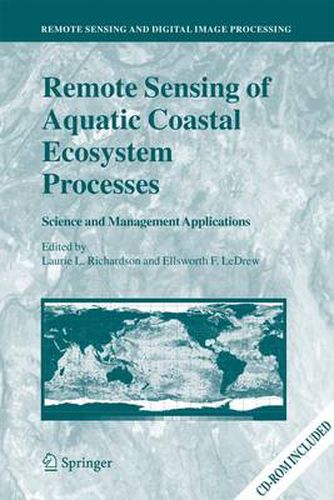Readings Newsletter
Become a Readings Member to make your shopping experience even easier.
Sign in or sign up for free!
You’re not far away from qualifying for FREE standard shipping within Australia
You’ve qualified for FREE standard shipping within Australia
The cart is loading…






This title is printed to order. This book may have been self-published. If so, we cannot guarantee the quality of the content. In the main most books will have gone through the editing process however some may not. We therefore suggest that you be aware of this before ordering this book. If in doubt check either the author or publisher’s details as we are unable to accept any returns unless they are faulty. Please contact us if you have any questions.
The aquatic coastal zone is one of the most challenging targets for environmental remote sensing. Properties such as bottom reflectance, spectrally diverse suspended sediments and phytoplankton communities, diverse benthic communities, and transient events that affect surface reflectance (coastal blooms, runoff, etc.) all combine to produce an optical complexity not seen in terrestrial or open ocean systems. Despite this complexity, remote sensing is proving to be an invaluable tool for Case 2 waters. This book presents recent advances in coastal remote sensing with an emphasis on applied science and management. Case studies of the operational use of remote sensing in ecosystem studies, monitoring, and interfacing remote sensing/science/management are presented. Spectral signatures of phytoplankton and suspended sediments are discussed in detail with accompanying discussion of why blue water (Case 1) algorithms cannot be applied to Case 2 waters.
Audience
This book is targeted for scientists and managers interested in using remote sensing in the study or management of aquatic coastal environments. With only limited discussion of optics and theory presented in the book, such researchers might benefit from the detailed presentations of aquatic spectral signatures, and to operational management issues. While not specifically written for remote sensing scientists, it will prove to be a useful reference for this community for the current status of aquatic coastal remote sensing.
$9.00 standard shipping within Australia
FREE standard shipping within Australia for orders over $100.00
Express & International shipping calculated at checkout
This title is printed to order. This book may have been self-published. If so, we cannot guarantee the quality of the content. In the main most books will have gone through the editing process however some may not. We therefore suggest that you be aware of this before ordering this book. If in doubt check either the author or publisher’s details as we are unable to accept any returns unless they are faulty. Please contact us if you have any questions.
The aquatic coastal zone is one of the most challenging targets for environmental remote sensing. Properties such as bottom reflectance, spectrally diverse suspended sediments and phytoplankton communities, diverse benthic communities, and transient events that affect surface reflectance (coastal blooms, runoff, etc.) all combine to produce an optical complexity not seen in terrestrial or open ocean systems. Despite this complexity, remote sensing is proving to be an invaluable tool for Case 2 waters. This book presents recent advances in coastal remote sensing with an emphasis on applied science and management. Case studies of the operational use of remote sensing in ecosystem studies, monitoring, and interfacing remote sensing/science/management are presented. Spectral signatures of phytoplankton and suspended sediments are discussed in detail with accompanying discussion of why blue water (Case 1) algorithms cannot be applied to Case 2 waters.
Audience
This book is targeted for scientists and managers interested in using remote sensing in the study or management of aquatic coastal environments. With only limited discussion of optics and theory presented in the book, such researchers might benefit from the detailed presentations of aquatic spectral signatures, and to operational management issues. While not specifically written for remote sensing scientists, it will prove to be a useful reference for this community for the current status of aquatic coastal remote sensing.